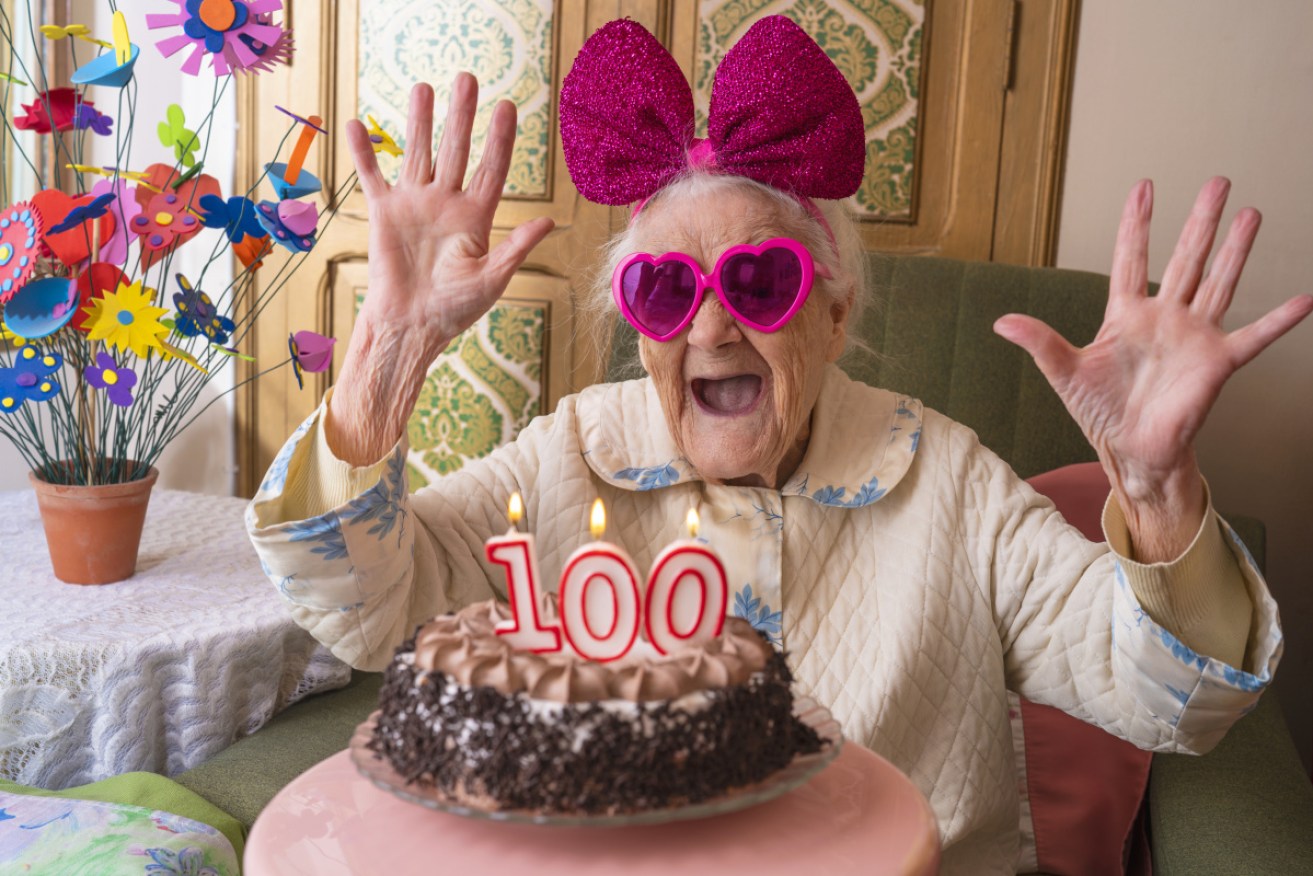Living to 100: Not all about genes, geography helps


New research suggests that where you live plays a role making it to 100. And money helps. Photo: Getty
Hoping to live long enough to get a telegram from the Queen, but not sure how to go about it?
Genes, of course, play a part in making it to 100 – what’s called “heritable factors.”
But according to Washington State University (WSU) researchers, these only account “for 20 to 35 per cent of an individual’s chances of reaching centenarian age.”
Where you live – and the age and size of the community you live among – have “a significant impact on the likelihood that you will reach centenarian age,” says a new study from WSU’s Elson S. Floyd College of Medicine.
Analysis of Washington State mortality data suggested that “highly walkable, mixed-age communities” – in more prosperous urban areas and smaller towns – tend to promote longevity.
“Highly walkable” means you don’t have to rely on a car or public transport to get around your neighbourhood – and that’s it’s also a pleasant place to walk, with trees and gardens, and easy access to the shops and services.
“Mixed-age communities” means there are kids and working people to mingle among, instead of just a mouldering heap of porch dwellers – and therefore isolation is less of a problem.
The researchers found that it also helps to be white and a woman.
Different factors at play
“These findings indicate that mixed-age communities are very beneficial for everyone involved,” said said study author Rajan Bhardwaj, in a prepared statement.
“They also support the big push in growing urban centers toward making streets more walkable, which makes exercise more accessible to older adults and makes it easier for them to access medical care and grocery stores.”
Mr Bhardwaj is a second-year medical student “who took an interest in the topic after serving as a home care aide to his ageing grandfather.”
Behaviour also plays a part. No surprise, but adopting a healthy lifestyle allows people, to some extent, to lessen the risk of disease you carry in your genes.
“We know from previous research that you can modify, through behaviour, your susceptibility to different diseases based on your genetics,” said Dr Ofer Amram, the study’s senior author and an assistant professor who runs WSU’s Community Health and Spatial Epidemiology lab.
Creating a map where the really old people live
The researchers analysed data associated with the deaths of nearly 145,000 people who died at age 75 or older between 2011 and 2015.
The data included information on each person’s age and place of residence at the time of death, as well as their sex, race, education level and marital status.
Then, based on where these people had lived, the researchers used data from the American Community Survey, Environmental Protection Agency, and other sources “to assign a value or score to different environmental variables for their neighbourhood.”
In other words, they ranked neighbourhoods as healthy – or not so healthy places to live depending on their levels of poverty, access to public transport transit and primary care, walkability, percentage of working age population (a reliable of a mixed-age community), rural-urban status, air pollution, and green space exposure.
Access to green spaces has increasingly come under scrutiny as a health issue. As The New Daily previously reported, studies have found that living in greener neighbourhoods is associated with slower cognitive decline in elderly people, reduced stress, mitigating cancer risk, and – by simply greening vacant lots – lessening feelings of depression in city dwellers.
The researchers then “conducted a survival analysis to determine which neighbourhoods and demographic factors were tied to a lower probability of dying before centenarian age.”
As we’ve noted, they found “neighbourhood walkability, higher socioeconomic status, and a high percentage of working age population were positively correlated with reaching centenarian status.”
While more research is needed to expand upon their findings, the researchers said the study findings “could eventually be used to create healthier communities that promote longevity in older adults.”
Don’t feel like moving?
There appear to be other routes to living a very long time. The world’s oldest men and women are routinely called upon to share their secrets for longevity.
Some have a simple answer: Chitetsu Watanabe said he made it to 112 by relentlessly smiling.
Others take a more complex route to antiquity: Emma Morano, 117, drank brandy, stayed single, went to bed early and ate raw eggs.
More encouraging was Misao Okawa, who said she’d lived to 117 by “eating delicious things.”








